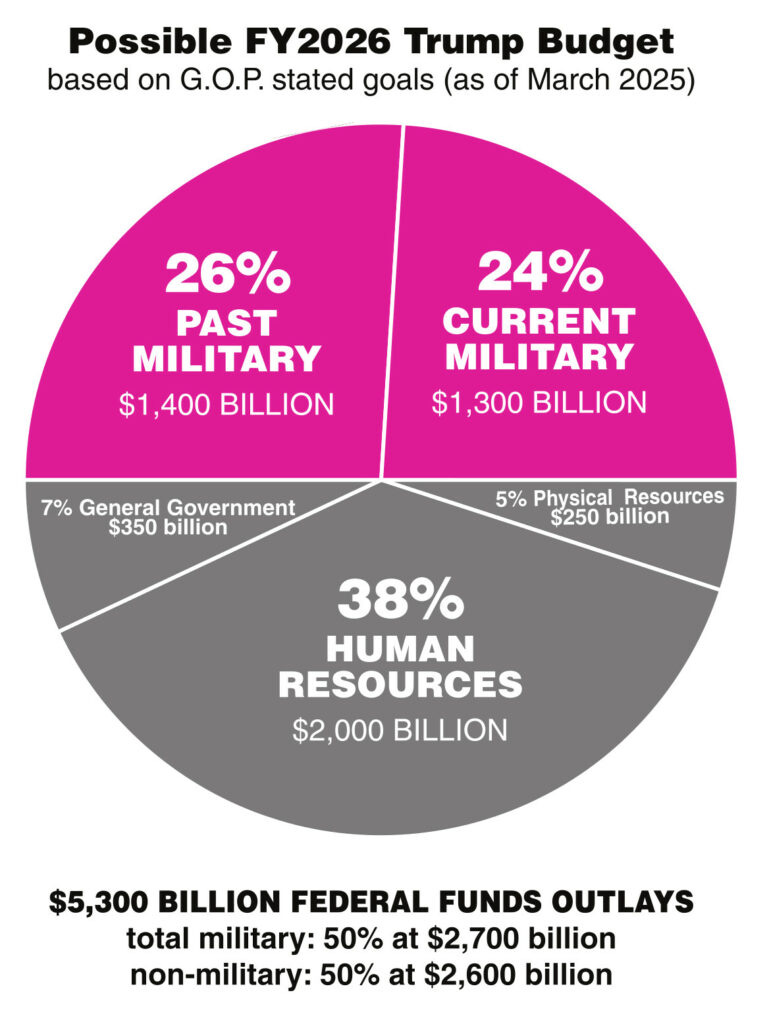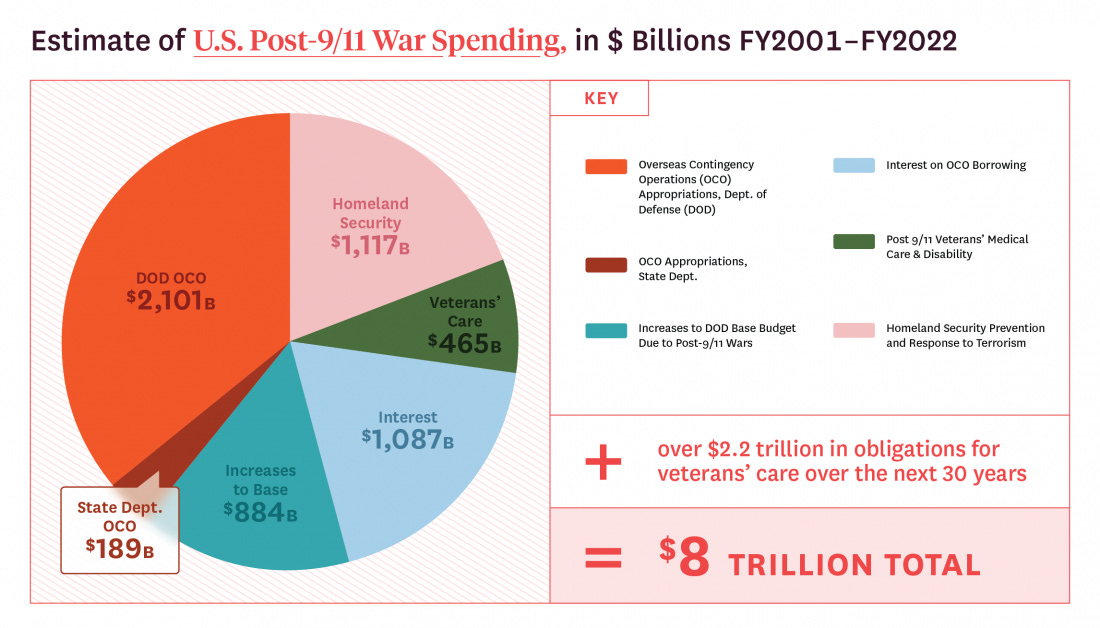Hi All – Today, April 15th, is Tax Day, when our federal income taxes must be paid and postmarked by midnight. Amid the many program and departments of the federal government being cut by the Trump/Musk dictatorship, today is a good time to pause and try to take in how the federal government uses our tax money.
My thinking about Tax Day is prompted in part by the absence of discussions of the cost of our military machine when we are protesting Trump’s cuts to our federal programs and services. These cuts are substantial and in many cases destroy, and are intended to destroy, entire programs. Yet in our protests so far, our zillion-dollar military machine goes virtually unmentioned, as does the wars and the cost of wars (Gaza, Ukraine) to which many billions of dollars have been allocated. Why this is, and how it might be changed, are subjects for another time; but it is worth thinking about why our protests against Trump/Musk steer clear of talking about the wars our government is funding.
Back to Tax Day. As the website Politico reports, Trump and his Secretary of Defense Hegseth will propose a trillion-dollar budget for the Pentagon for the fiscal year beginning in October 2025, an increase from the $892 billion budget for the fiscal year we are in now. For a useful overview of what this new military budget means, I recommend a program from Democracy Now! last week featuring Bill Hartung, “Elon Musk Stands to Get Even Richer as Trump Backs $1 Trillion Budget for Pentagon.”
According to a "tax receipt" for 2025 worked up by our friends at the Institute for Policy Studies, the average US tax payer $3,707 to the government for wars and for the cost of weapons. Keeping in mind that this is the figure for last year, and also that the payments from tax payers in New York and Westchester are much higher than those in other parts of the country, you can see that the “war tax on Westchester,” is very high.
Below I’ve linked some charts and text from the War Resisters League, which each year publishes a pie chart showing where our tax money goes, and from the Costs of War project of Brown University, which has tons of details about the same thing. I hope you find this info useful – let’s think about it as we protest the high taxes we pay for so little in return.
Best wishes,
Frank Brodhead
for CFOW
This pie chart is from the War Resisters League. For info about the WRL and more charts, go here.
Below is a chart from The Costs of War Project at Brown University. They have a huge number of charts and info about many aspects of US wars since 9/11, such as the one below about the costs of these wars. Find the Costs of War Project here.






Frank. For some reason some of the charts weren’t showing up.